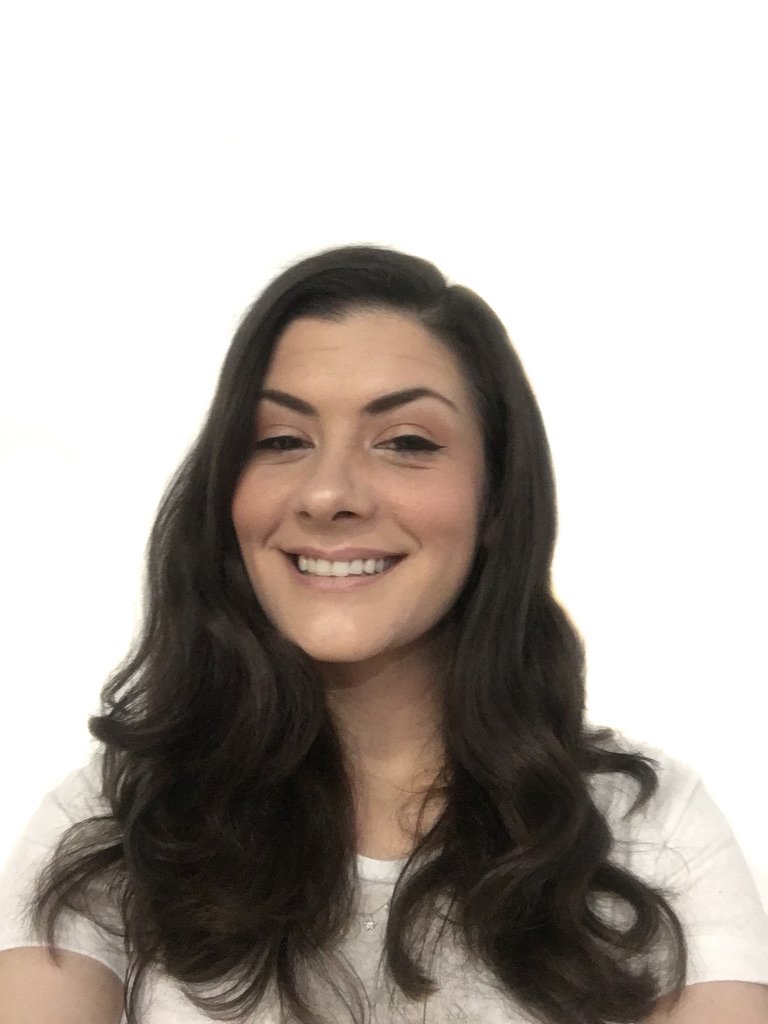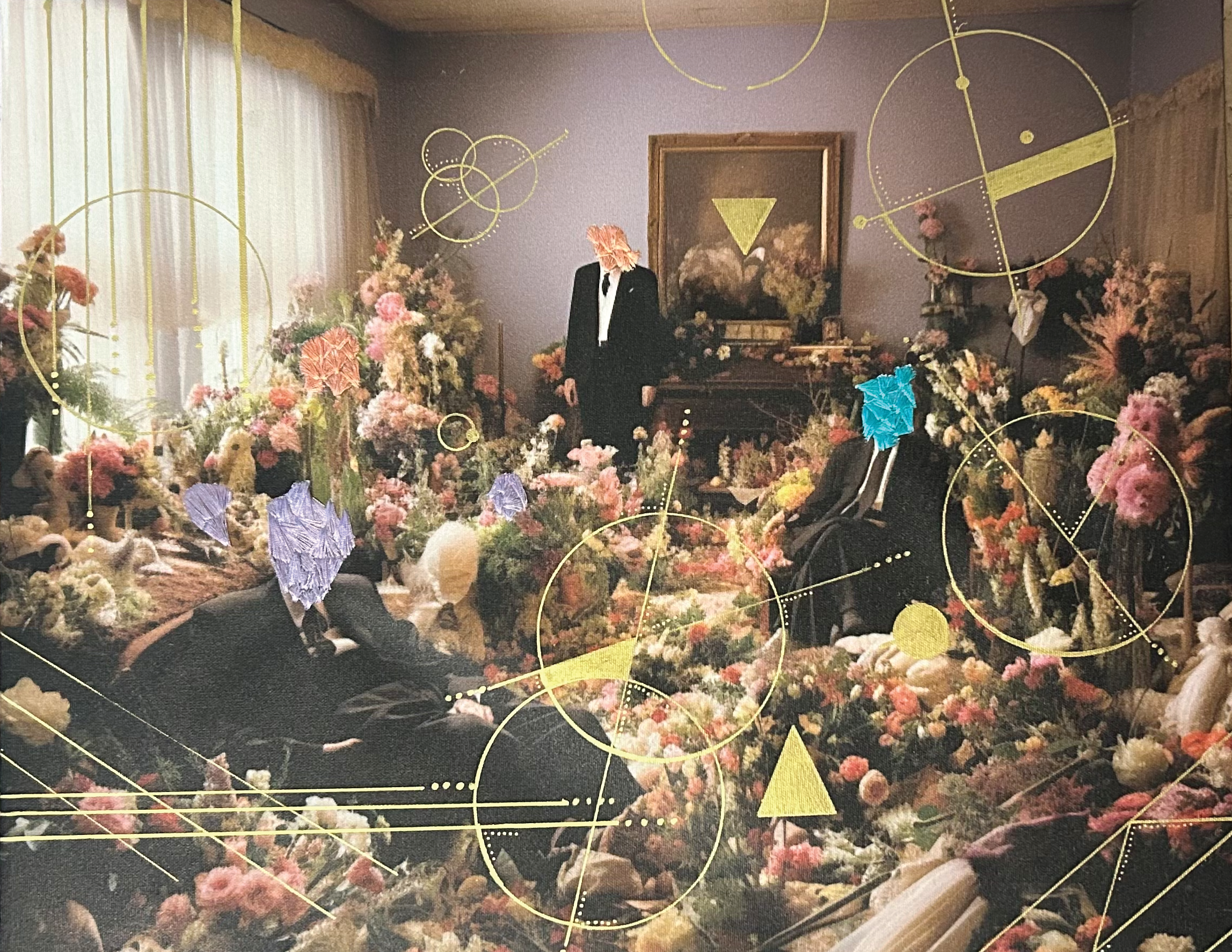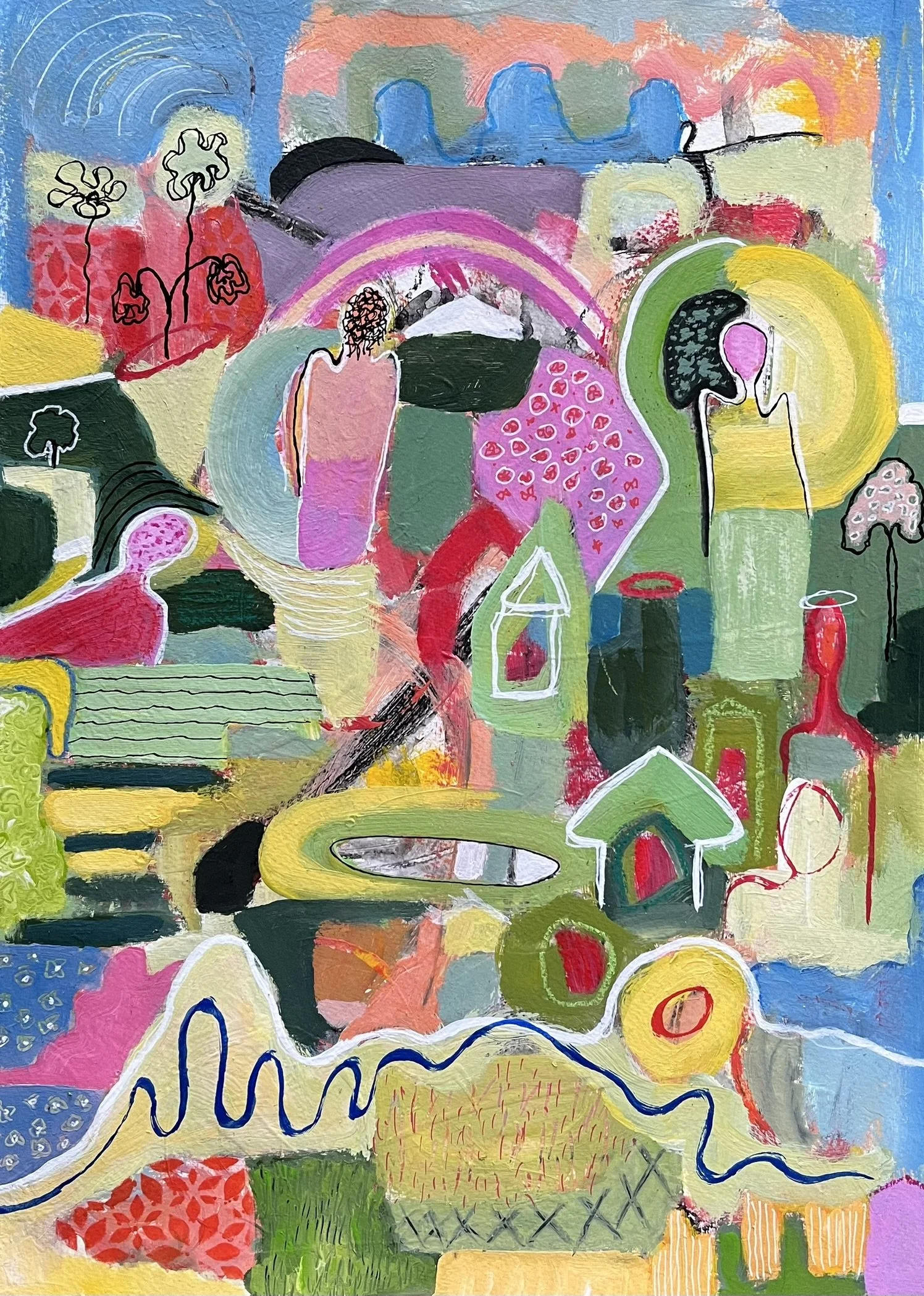Interview with Zelda Cavanaugh
Zelda, your early experiences in the funeral service industry are fascinating, particularly how they influenced your technical skills and your understanding of the human psyche. How do these experiences in handling both the physical and emotional aspects of grief manifest in your artwork, especially when exploring mental health themes?
Working in the funeral service industry, I got a firsthand look at the raw, unpolished mechanics of grief. You see grief up close and unfiltered, and there’s nothing soft about it. It strips you down to the basics. Every stitch I make in my art is tied to that understanding. I’d spend hours on restorative arts—suturing here, a bit of patching there—trying to make everything look as it should, even when it never really could. Those skills translated strangely well into my art. Grief is the great leveler. It’s blunt, it doesn’t care about timing. The work is simple, deliberate, without frills. Canvas, thread, color. The textures carry their own kind of weight, their own memories, each line and layer are honest in what it shows and what it holds back. When I work with mental health themes, it’s about seeing things as they are—no gloss, no easy solutions. Just the truth, stitched together, one line at a time. Every stitch is a quiet nod to the resilience we all need to face life’s messiness. When I explore mental health, it’s with the understanding that healing isn’t about perfection; it’s about holding things together with whatever you’ve got, inviting viewers to feel the threads and, maybe, see themselves in the seams.
In blending AI with hand-sewn embellishments, your work uniquely bridges the digital and physical worlds. Could you share your perspective on the emotional depth or limitations of AI-generated art and how your hands-on additions create a fuller, more human expression within each piece?
I make these personas, each one shaped by a diagnosis from the DSM-5. I give them names, traits, and lives. I talk to them through AI, trying to see the world through their eyes, to understand how they might feel. It’s a strange thing, talking to something that isn’t real, but it helps me reach into places I might not get to on my own.
But here’s the truth about art: the heart of it isn’t in the technique, not unless you’re one of the rare few with the genius of a Michelangelo or Picasso. For most of us, the value lies in the idea, in the concept. AI can create technically beautiful things, but it can’t feel. AI is just a tool—a way to stretch my mind, to push a theme further. But the real heart of it, the reason to make the piece in the first place, comes from me. I use the machine, but the meaning is mine, every stitch of it.
Supporting those in need has shown me firsthand the irreplaceable depth of true human experience. There's a certain gravity in comforting someone, knowing each gesture or word is loaded with meaning. It is profound to stand so close to suffering, and it is a privilege. This is not something that can be duplicated. On the contrary, I’ve encountered people—real, breathing humans—who, despite their presence, come across as flat and detached, trying to replicate my work on some level but lacking the lived experience that gives it meaning. They’re attempting to mirror what they see, but without the depth of that direct, human connection, it falls short and ends up feeling almost careless. In art, as in life, this genuine human factor is irreplaceable. AI can replicate forms and patterns, and so can people, but they can’t replicate the soul that makes each experience, and each piece of art resonate.
When I add hand-sewn details or other physical elements, I’m bringing a piece of myself into the work. It's like how, in funeral service, every small gesture can mean the world to a grieving family. Those moments of care can’t be replaced by machinery. By layering these hand-made touches onto digital work, I’m bridging a gap, creating art that resonates on a human level. It’s like grounding the ephemeral in something real, something that feels alive and capable of holding the emotions AI alone can only hint at.
You’ve mentioned that your artistic process incorporates the DSM-5 as a structural foundation, followed by layering musical and literary influences. How do you navigate the process of transforming scientific and medical frameworks into something visually emotive and abstractly artistic?
Transforming the DSM-5 into visual art is a bit like translating a foreign language that only I can hear. The DSM-5 provides the structure—the clinical, scientific understanding of human psychology, the framework of diagnosis and categorization. But where it begins as rigid and formal, I layer in the fluid, emotive influences of music and literature to bring it to life. It’s about blending structure with the unpredictable. Music gives it rhythm, while literature adds narrative and emotional depth. Together, they strip away the clinical coldness and add a heartbeat to the piece, allowing me to explore the raw, human side of these psychological conditions. By the end, what was once a medical definition becomes something abstract, something that moves beyond the clinical to the deeply personal. It’s less about defining a condition and more about evoking the lived experience of it—about the chaos, the pain, the beauty, and, hopefully, the understanding.
Your use of embroidery as both a healing metaphor and an aesthetic element is striking. Can you speak more to the tactile qualities of your pieces and how you hope viewers connect with the materiality and symbolism of the thread, especially in relation to mental health?
The embroidery in my work serves as both a tactile and symbolic bridge to the themes of mental health. Thread, in its softness and fragility, reflects the human condition—how we can feel frayed or even come apart, yet somehow, we hold. Each stitch is careful, deliberate, like an act of mending that knows it might come undone. There’s something honest in that duality, a nod to self-destruction and self-healing as two sides of the same coin.
When I sew, it’s as if I’m in conversation with self-esteem itself. Sewing demands gentleness, patience, and respect for every detail, just as rebuilding a sense of self does. Each thread is vulnerable and resilient, much like the way we pull together our identities and self-worth after they’ve been tested. I want viewers to see that thread not simply as material but as a symbol of continuity—of taking what’s broken and stitching it back, piece by piece, into wholeness. If they reach out to touch it, maybe they’ll find a bit of their own healing threaded within.
You began your creative journey with AI as an experiment to gauge empathy within technology. After working with AI for some time now, what would you say about its ability to understand or convey human emotions, and where do you see the human role in this evolving landscape of machine-assisted creativity?
My journey with AI started as a curiosity, a question of whether machines could grasp even a sliver of what we call empathy. After working with it, I’d say that AI can certainly mimic human emotions—like a mirror reflecting the gestures but missing the soul behind them. It can be eerily accurate in recognizing patterns, but true empathy, the lived, human understanding, is something it can’t quite reach.
In this evolving landscape, I see AI as a tool, a partner that amplifies certain creative possibilities, but it doesn’t replace the human touch. AI is brilliant at processing vast amounts of data and offering surprising suggestions, but it’s the artist—the human—who guides it, who adds depth, context, and meaning. Our role is to shape the story, to draw from lived experience and give it resonance, something a machine can’t replicate. In the end, AI is a powerful amplifier, but the core of creativity remains distinctly human.
Your pieces incorporate musical theory, specifically the Circle of Fifths, as a structural device for visual composition. What led you to use musical theory in your visual art, and how does this integration affect the emotional or psychological impact of your pieces on viewers?
I was introduced to the Circle of Fifths through my friend Jason. Jason is a musician, and he was an Army Ranger (1st Battalion). His approach to music was always deeply structured yet expressive, almost like a strategy—a way to make sense of chaos. Jason taught me how musical theory, particularly the Circle of Fifths, could bring harmony and structure to complex emotions. I started to see parallels between that concept and my own work, where I aim to create visual compositions that guide viewers through layers of feeling.
Integrating musical theory, especially something as foundational as the Circle of Fifths, has allowed me to add an underlying rhythm and order to my pieces. It’s not just about arranging elements but about creating an emotional cadence that viewers can feel, even if they don’t consciously recognize it. Just as music can evoke specific moods and memories, I hope this structured approach in my art allows viewers to access deeper psychological and emotional layers, almost as if they're moving through the notes of a familiar, unspoken melody.
Having transitioned from a career rooted in technical communications and product management to a role in contemporary art, what parallels do you see between these fields, particularly in terms of storytelling, connection, and the interpretation of complex information?
I’m still in product management, but art has become part of the story too. In both fields, it’s about cutting through the noise and finding what matters. In product management, I take complex ideas and make them simple, something people can use, understand, connect with. Every feature has a purpose, every decision has a reason. You’re building something real, something people can touch and rely on.
In art, it’s not much different, though the tools and the goals have changed. Now it’s about translating feelings and thoughts that don’t fit in an app. It’s taking the abstract and making it solid enough to feel, to understand on some level. Both work on the same basic principle: understand the human in front of you. Whether it's a product or a piece of art, you're just trying to make sense of things, and make a little connection along the way.
Your work with DSM-5 diagnoses and neuroscience pushes the boundaries of how mental health can be visually represented. How do you hope your art reshapes viewers’ perceptions of mental health, and are there specific reactions or conversations you aim to inspire through your pieces?
I want people to see mental health for what it really is—complex, layered, and deeply human. I try to show that these aren’t just diagnoses or cold, clinical terms. They’re lived experiences, filled with fragility and strength all at once.
I hope when people look at my work, they feel something close to empathy, maybe even a bit of discomfort. I want them to question what they think they know about mental health. If my work can spark honest conversations, get people talking in a real way, then it’s done something worthwhile.
From initial digital concepts to canvas printing and intricate hand-stitching, your artistic process is elaborate. Could you walk us through a specific piece and discuss how each step—from AI involvement to your final embellishments—transforms your initial idea into a multidimensional, tangible artwork?
I start with a mental health diagnosis from the DSM-5. I dig into its symptoms and nuances, creating an AI persona that embodies the condition. This persona becomes my subject, a character with whom I can interact. I ask it questions, probing into its thoughts and emotions, and I bring in my experiences from nursing and grief counseling, plus memories of real people who’ve faced this diagnosis. These digital conversations shape the direction of my work, blending the clinical with the human.
With this foundation, I feed the persona’s details and diagnostic criteria into an AI image generator. The output is rough, an abstract sketch that captures the persona’s essence. Then I refine it by adjusting shadows, textures, and hues until it conveys the layered reality of what I think is important to convey.
Then, image is printed on canvas, but it’s not finished. I take to the needle and thread, stitching in areas that feel right. The Circle of Fifths is added and crafted as a symbol of balance amidst turmoil and the tones align to the diagnostic criteria and subject at hand. I also add gold leaf, a nod to resilience and the beauty in brokenness.
Finally, I add a custom wooden backing with my initials burned into the wood—a personal mark, a seal on the journey from idea to tangible work. It’s a process that takes something intangible and makes it real, something you can hold and feel. Overall, it is a lengthy process, but I think it is important for the process to be wholly my own and a reflection of my experiences both professionally and artistically. It is something I can give to the world, but it cannot be taken away.
With shows across Berlin, Paris, London, and Barcelona, you are exhibiting your art on a global stage. How do you find your themes of mental health and the human-computer connection resonate across different cultural contexts, and do you see any variations in interpretation based on cultural backgrounds?
I've noticed that no matter the city or the cultural backdrop, people respond to my work in similar ways. It’s a reminder that we all wrestle with the same fundamental issues—mental health, identity, connection, the struggle to make sense of our own minds in a world that doesn’t slow down. The themes I explore—vulnerability, resilience, the friction between humanity and technology—cut through cultural differences. They reach a part of us that’s universal.
So, no, I don’t see a big difference in interpretation across these cities. Human is human, no matter where you are. The work seems to tap into something shared and unspoken, something that doesn't need translating. And that, to me, is proof enough that we're all far more alike than different, even with the miles and languages between us.




















